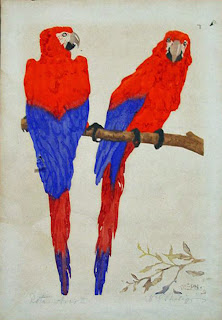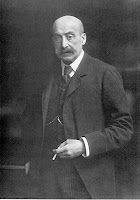Besides the sun, the sea and the sands, what do these two paintings of "a Day at the Beach", both created around 1910, have in common ?
Well, the first one is by German Heinrich Knirr (1862-1944) and the second is by French Lucien Jules Simon (1861-1945). They came into, lived and left the world about the same time.
Left and middle : Lucien Simon by Charles Cotet (1863-1925) and a selfportrait;
Right: a portrait of Heinrich Knirr
Both man in their time have ran influential and highly respected painting schools, Knirr in München (the Knirr School of Painting also saw Paul Klee (1879-1940) and Emil Orlik (1870-1932) as students) and Simon besides a later teacher at the Academie Julian as well as in his studio in the the Academie des Beaux Arts in Paris in the beginning of the XXth century tought at the Academie de la Grande Chaumière (in and named after the Rue de la Chaumière) in Paris. Walter Sickert (1860-1942) and Osip Zadkine (1890-1967) also tought there.
Professor Knirr gained a reputation in later life as the painter who did (too) many portraits of Adolf Hitler (1889-1945) and his mother:
and Simon married the sister of noted landscape painter André Dauchez (1870-1948), Jeanne. He not only fell in love with the sister but also with the Breton people and landscape. Like his brother-in-law he became a famous painter of the Breton people and landscape.
He also was the father of animal sculptur Paul Simon (1892-1979) seen in this painting with one of his three sisters probably Lucienne.
Both men were quite famous and have had a great influence on many artists.
What ties them together is they both saw artist and printmaker Else Schmiedeberg-Blume (Worbis 1867-1927 Leipzig) as their student. Simon probably as privat teacher in Paris. Else when living and working in Berlin and as a member of the Verein der Berliner Künstlerinnen most probably will have known fellow member, board member, director of the Berlin painting and drawing school and artist Elisabeth von Oertzen (1887 - ?) A woodblock print by her showed up recently and, although very little is known about her life, she will be the subject of my next posting.
You'll find a very fine and rare copy of the "Sonnenblumen" woodblock print by Else Schmiedeberg on offer in the above Sale-room page. Swapping it with one of her other flower prints is also negotiable.









.jpg)






















.jpg)






















